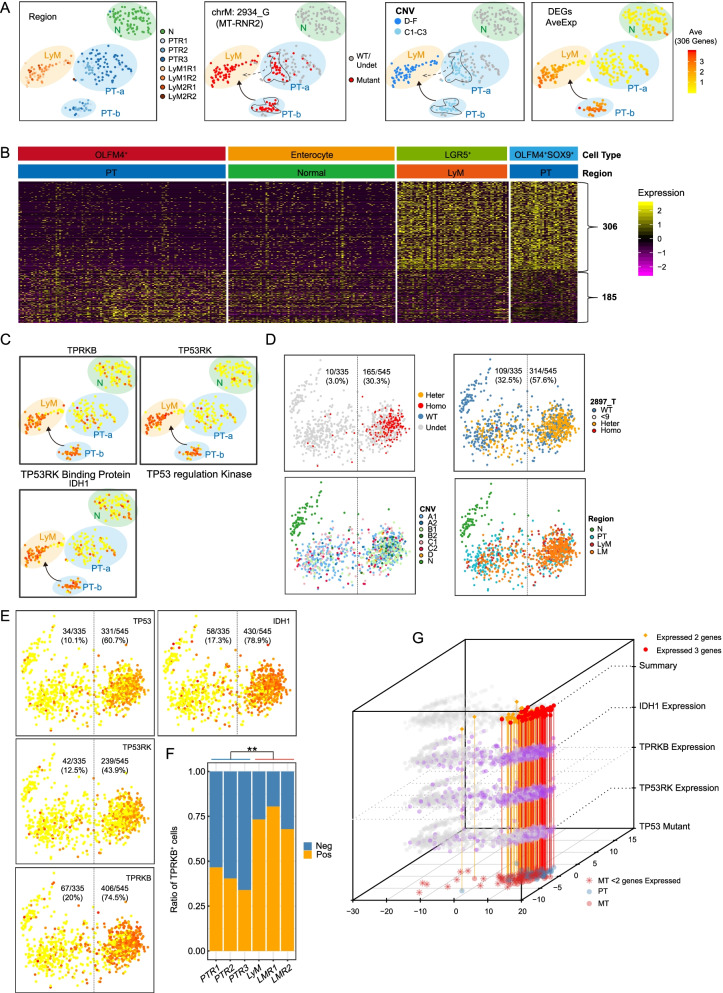Fig. 7.
Integrated analyses of the associations between TP53 mutation and global gene expression profiles. A The tSNE map of patient #4, which has a TP53 frame-shift mutation. Cells were colored according to tissue origin, mitochondrial mutation, merge CNV types, and average expression levels (log2(TPM+1)) of 306 primary tumor OLFM4+SOX9+ group specific genes, which are shown in B. N: adjacent normal tissue. PT: primary tumor. LyM: lymph node metastasis. LM: liver metastasis. Cells from primary tumor were clustered into two groups, PT-a and PT-b. Associated with Fig. S10A. B Heatmap shows the expression pattern of DEGs between OLFM4+ SOX9+, and OLFM4+ in all four cell groups of patient #4 C. The expression levels of IDH1, TPRKB (TP53RK-binding protein), and TP53RK (TP53 regulation kinase) were projected on tSNE maps. Colors from yellow to red represent expression levels from low to high. D PCA clustering of patient #9 epithelial cells. Cells were colored by TP53 Sanger results, CNV type, cell origin, and mitochondrial mutation (chrM:2897). N: adjacent normal tissue. PT: primary tumor. LyM: lymph node metastasis. LM: liver metastasis. E The expression levels of TP53, TPRKB, TP53PK, and IDH1 were projected to the PCA maps of patient #9 epithelial cells. TP53High group means tumor epithelial cells that expressed TP53 gene according to the single-cell RNA sequencing data, while TP53Low group represent tumor epithelial cells that did not expressed TP53. F The ratio of tumor epithelial cells that expressed TPRKB genes for each region. Metastatic tumor regions had more cells expressing TPRKB. ** represents p-value < 0.05. N: adjacent normal tissue. PT: primary tumor. LyM: lymph node metastasis. LM: liver metastasis. Neg represent TPRKB negative cells and Pos represent TPRKB positive cells. G The three dimensions plot shows the relationship between IDH1, TPRKB, TP53RK expression with TP53 mutations. The XY plane shows the PCA result of Patient #9. The three layers of IDH1, TPRKB, and TP53RK show the expression levels of these three genes on PCA map. The summary layer shows cells with TP53 mutations (according to Sanger sequencing). Red represents cells with TP53 mutation and expressed all three genes (IDH1, TPRKB and TP53RK) simultaneously, while yellow represent cells with TP53 mutation and expressed two of these genes. The TP53 Mutant layer shows the tissue origin of cells with TP53 mutations. Red represents cells collected from metastatic tumor and blue represents cells collected from primary tumor

